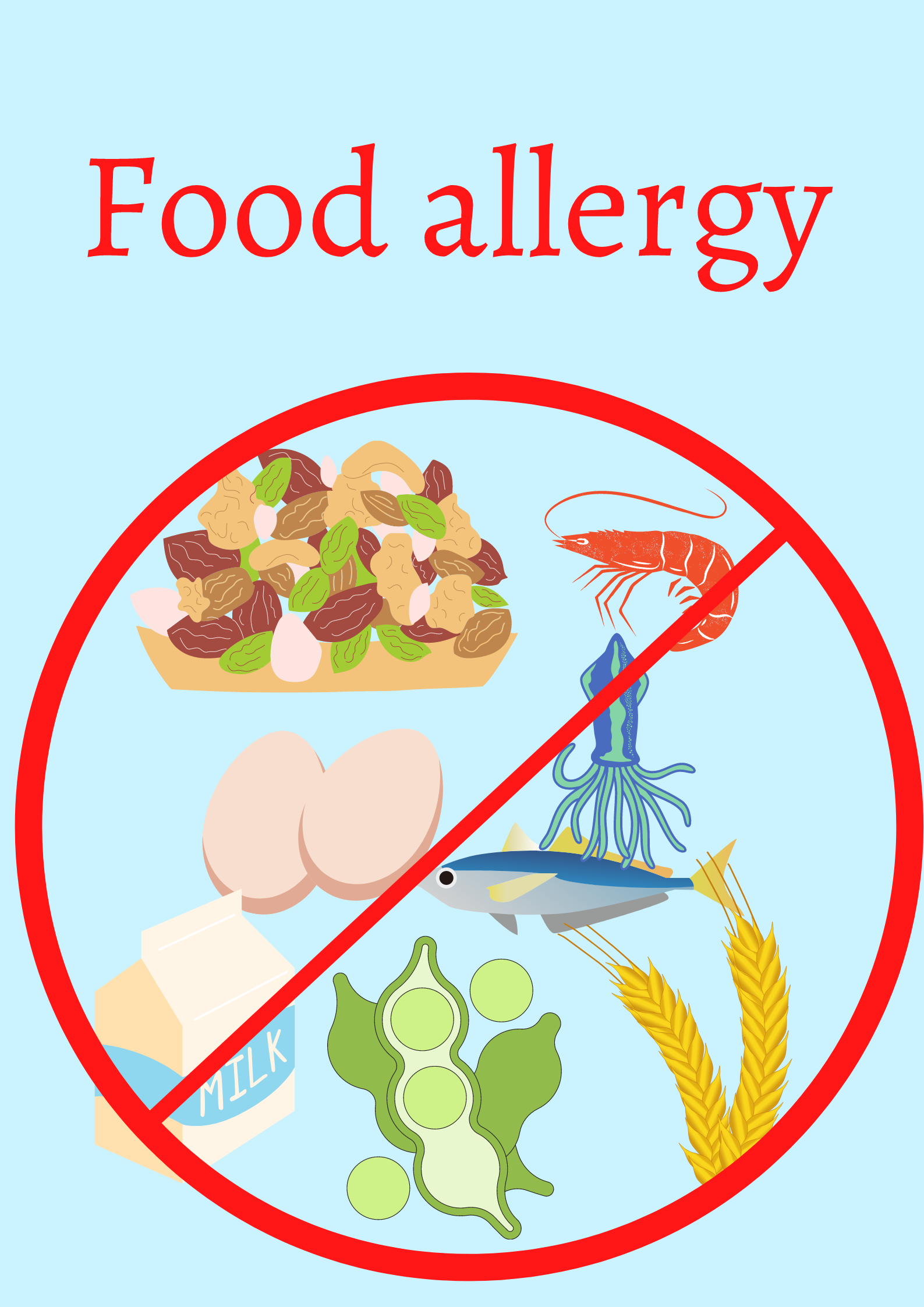



A food allergy is a condition in which certain foods trigger an abnormal immune response of the body. Food allergies can develop at any age. Some can appear in childhood and disappear later in life, while some may last forever. If you find your child saying “I’m feeling heaviness in my throat” or “I am unable to breathe” soon after a meal, it may be because of the food they had. don’t dismiss your kids when they complain to you to make sure you confirm what might be causing discomfort. Other symptoms of an allergy may include;
Anaphylaxis: it is a severe allergic reaction and occurs within minutes.
Symptoms of a severe allergic reaction (anaphylaxis) include:
Even if you are careful, it is difficult to avoid all contact with a specific food. If your child has a severe allergic reaction (anaphylaxis), call for an ambulance to take you to the emergency room or if you have a plan of action you can self administer epinephrine auto injection.
Here are the commonly known food allergy that can cause any of the above symptoms, they include;
This is the most common form of allergy in kids. The trigger that causes food allergies in eggs is egg protein like conalbumin, ovomucoid and ovalbumin. While most children who are allergic to eggs become tolerant over time (mostly after the age of 16), some individuals remain allergic their entire lives.
Symptoms
Egg allergy reactions vary from person to person and usually occur soon after exposure to eggs. This include:
Dietary advice
Allergies to shellfish and fish are more common in adults and adolescents than in young children. The types of seafood that can cause allergies include scaly fish (like salmon, tuna, catfish & cod) and shellfish, including mollusks (such as oysters, mussels and squid) and crustaceans (such as prawns, crayfish).
Symptoms
Fish and shellfish allergic reactions can occur after eating seafood, but you can also have symptoms after touching seafood or inhaling fumes from shellfish or fish while they are being cooked or processed in a factory.
Milder allergic symptoms that can occur before a severe allergic reaction include:
Dietary advice
The only current treatment for food allergies is to avoid the food that causes your allergy. Always read ingredient labels to identify shellfish ingredients. In addition, avoid touching shellfish, going to the fish market, and being in an area where shellfish are being cooked (the protein in the steam may present a risk).
Many children may be allergic to cow’s milk. It can also be passed to the child indirectly through breast feeding. Many children out-grow of the allergy once adults but one fifth of them are said to have it in their adulthood too.
Symptoms
Immediate signs and symptoms of milk allergy might include:
Dietary advice
Nut allergy is the allergy of either tree nuts (almond, cashew, chestnuts), peanuts and seed (Sesame seeds, sunflower seeds etc.). Peanuts is one of the most common allergies in children and although the allergy will improve with time for some, for others it will become worse. People who are allergic to peanuts will not necessarily be allergic to tree nuts or seeds and vise versa.
Symptoms
Allergic symptoms that can occur before a severe allergic reaction include:
Dietary advice
Allergy to soy, a product of soybeans, is a common food allergy. Often, soy allergy starts in infancy with reaction to soy-based infant formula. Although most children outgrow soy allergy, some carry the allergy into adulthood.
Symptoms
For most people, soy allergy is uncomfortable but not serious. Rarely, however, an allergic reaction to soy can be frightening and even life-threatening. Signs and symptoms of a food allergy usually develop within a few minutes to hours after eating a food containing the allergen.
Soy allergy symptoms can include:
Dietary advice
Wheat allergy is an allergic reaction to foods containing wheat. Allergic reactions can be caused by eating wheat and also, in some cases, by inhaling wheat flour.
Symptoms
A child or adult with wheat allergy is likely to develop signs and symptoms within minutes to hours after eating something containing wheat. Wheat allergy signs and symptoms include:
Dietary advice
Avoiding wheat is the primary treatment for wheat allergy, but that isn’t always as easy as it sounds. Wheat is found in many foods like Breads and bread crumbs, Cakes, muffins and cookies, Breakfast cereals, Pasta, Couscous, Farina, Semolina, and including some you might not suspect, such as soy sauce, ice cream and hot dogs. foods to eat include amaranth, barley, corn, oat, quinoa, rice, rye and tapioca.
REFERENCES
5 Common Food Allergens in India (published by RRMCH blog) https://www.rrmch.org/blog/5-common-food-allergens-in-india/
Living With a Milk Allergy (published by WebMD) https://www.webmd.com/allergies/milk-allergy#:~:text=Dairy%20products%20are%20an%20important,a%20well%2Dbalanced%20eating%20plan.
Nut allergies (published by better health channel) https://www.betterhealth.vic.gov.au/health/ConditionsAndTreatments/nut-allergies#:~:text=Symptoms%20of%20peanut%2C%20tree%20nut,%2C%20cramps%2C%20nausea%20or%20vomiting.
Soy allergy (published by mayoclinic) https://www.mayoclinic.org/diseases-conditions/soy-allergy/symptoms-causes/syc-20377802#:~:text=Allergy%20to%20soy%2C%20a%20product,in%20and%20around%20the%20mouth.
Shellfish and fish allergies (published by better health channel) https://www.betterhealth.vic.gov.au/health/ConditionsAndTreatments/shellfish-and-fish-allergies#:~:text=Symptoms%20of%20fish%20or%20shellfish,%2C%20diarrhoea%2C%20nausea%20or%20vomiting.
Egg allergy (published by mayoclinic) https://www.mayoclinic.org/diseases-conditions/egg-allergy/symptoms-causes/syc-20372115
Wheat allergy (published by mayoclinic) https://www.mayoclinic.org/diseases-conditions/wheat-allergy/symptoms-causes/syc-20378897#:~:text=Wheat%20allergy%20is%20an%20allergic,cases%2C%20by%20inhaling%20wheat%20flour.
Please fill the form to get more information and set up a FREE Go Alpha Demo at your preschool.